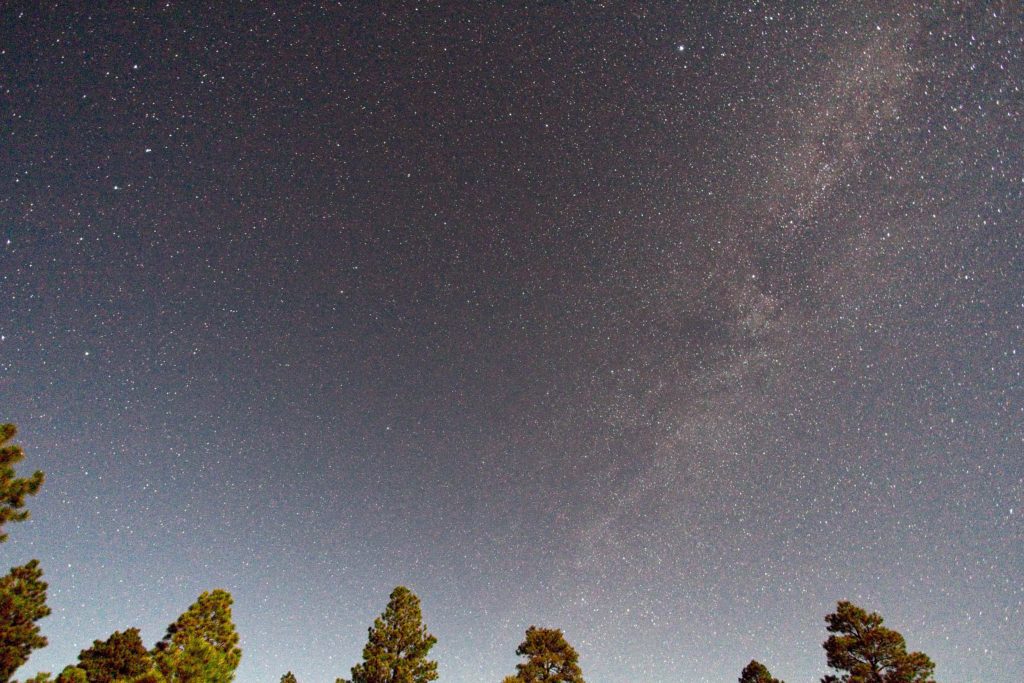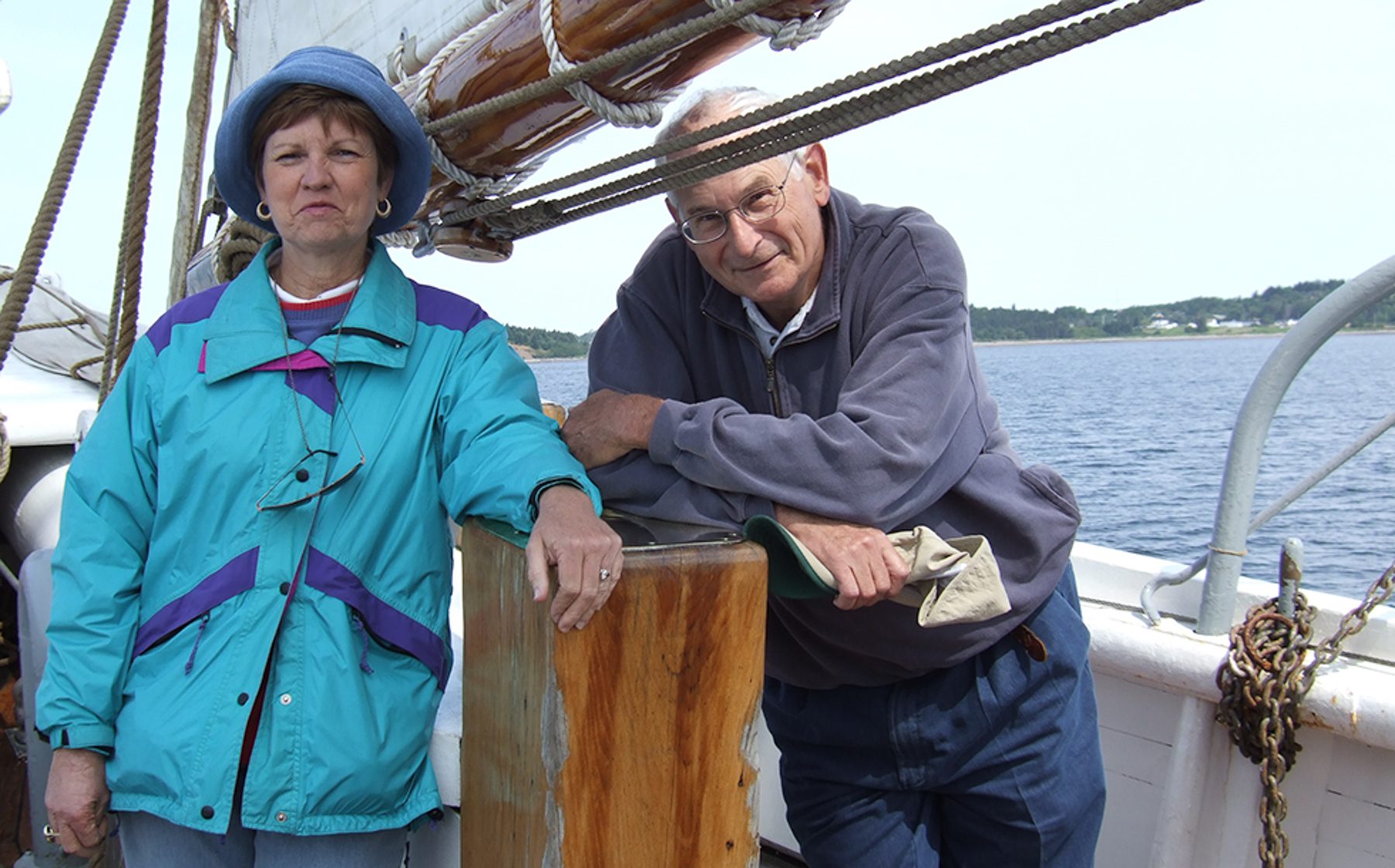As we mentioned in our opening monologue for this trip, one of our goals was to do some photography of the night sky. Well, what you see below is our first attempt. While not entirely successful, we did achieve some small steps and learned a lot for our next session.
As you recall from our previous posting, we visited the Sunset Crater Volcano and the Wupatki National Monument on 24 April. Conditions appeared to be favorable for doing our first-night sky photography that evening. So, we camped in the parking lot of the Sunset Crater Volcano (with permission of the park service) and attempted to get some sleep before our designed arousal time of 2:30a on the morning of 25 April.
When the alarm sounded, I struggled out of bed and eagerly looked to see if the skies were clear or shrouded in clouds. The good news: the skies were clear. The bad news: A half-moon was shining brightly in the sky. So much for proper planning!
Undaunted (particularly since we were already awake), we donned our clothes, grabbed the camera, tripod, red-filtered flashlights, interferometer and stumbled outside. As we looked skyward, I could not ascertain any vestige of the Milky Way. However, eagle-eyed Meriam spotted it. Due to the shining moon and some light pollution from Flagstaff, it was rendered almost invisible.
However, being the ever optimists, we set up the camera and began taking photographs. The photographs below show a modicum success. Conditions look more favorable on the nights of May 4, 5, or 6. On these nights, the moon is not shining and the Milky Way is relatively high in the sky…stay tuned.

The Milky Way can be seen in the right-hand portion of this photograph. Unfortunately, due to light pollution, the center of the galaxy (the brightest portion) is not visible.

Another viewing angle.

Another view with no foreground. Looking closely you can see the streak of a shooting star.

After photographing the Milky Way at Sunset Crater, we hustled the 23 miles to the Wukoki Pueblo before the sunrise. As you can see here, we didn’t entirely make it. While it was still somewhat dark, light was beginning to show on the horizon. We would have preferred to get a photograph with Wukoki playing a more prominent role, but we had been instructed by the park service to stay on the pavement of the parking lot, not to venture on any paths.

maoGod’s beauty that we rarely see in our light polluted cities. You have captured some great scenes. I can’t wait to see what you have to show us in your future blogs.
MeriamA lovely comment. Thk u for being soooo right on target.
DianaWOW you guys… never have seen so many stars… must make you very emotional.
HaroldTalk about “dark skies”! Hopefully the next few nights will provide even more stars!
TiffanyThese are great! Thank you for posting! I hope your upcoming nights show even more of the Milky Way! What an exciting thing to get to see. I’m so glad you are having fun! We love you both!
HaroldTJ, many thanks for responding! Wish all you could be here. Tonight we are making another attempt, assuming the clouds, etc cooperate. Love you guys.
C KempThanks for the 2:30 rising effort–that’s above and beyond your job description– and you did get some very good photos Charlie
HaroldThanks Charlie. As I mentioned in my response to TJ, we will be attempting it again tonight in Arches National Park. Cross your fingers we have no clouds. Looks like the moon and Milky Way will cooperate.